How do we see colors - physics explained
It is time for some fun science again! Even though it says "physics explained" in the title, we will touch on some biology too. This time, physics and biology will work together and bring us closer to understanding not only the beauty of our world but also its magnificent ability to show us that beauty in all the colors of the visible spectrum.
Before we begin, for all of you interested in other "physics explained" posts I have done, here is the list of those published so far:
COLD BOILING WATER
EVERYTHING IS MAGNETIC!
CALCULATE THE SPEED OF LIGHT USING CHOCOLATE
As always, my goal is both to educate and to entertain so all your suggestions and valuable feedback on how to make this kind of posts even better is more than appreciated. Feel free to contact me in comments or on discord and pitch me all your questions and even ideas on what you would like to read about next.
And now,
are you ready for some color?
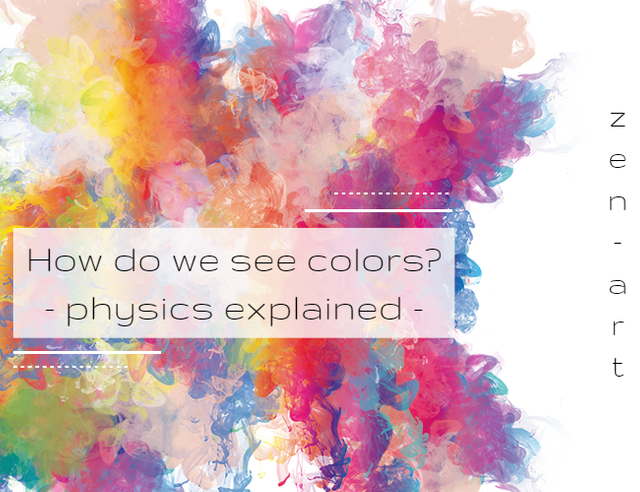
When you look at a banana and say that it is yellow, it is not entirely banana's fault. You have something to do with it too, just like our Sun does. Yes, the Sun. Not to get you confused, the Sun has something to do with apples being red, the sky being blue and grass being green.
There are actually 3 components necessary to see any color:
- a light source
- an object
- an eye
If any of these things go missing, the color will not be seen. We will go over each one of them and explain what vital role they play here.

When talking about light sources, we first have to know that they are two divisions. We can divide them by their nature and by the fact are they creating light or not. There are two kinds of light sources if we talk about their nature; natural and aritifcial ones. There are also two kinds of sources if we talk about light creation or not; primary and secondary ones. Those secondary ones are often not regarded as light sources at all because they are not actually sources. They reflect light. Mirrors are like that, they do not produce light, but they reflect it and if you point a flashlight into a mirror, that mirror will reflect light from the same angle the light hit its surface.
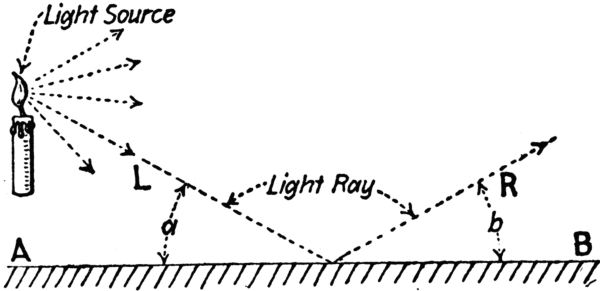
Light always behaves this way, the angle of reflection and the angle of incidence are always the same. The point is, mirror here is not a source. It will shine upon things but the light was not created by it, only reflected. Can you guess which secondary light source is often mistaken for a primary one?
The moon is not a light source!
The moon would be the right answer to my previous question. It is, in fact, not a light source, or if you prefer, it is a secondary light source. But how does it glow? you may ask. It glows because the light from the Sun is reflected off of it.
Primary light sources are always those things that change another form of energy into light energy. The Sun transforms nuclear energy, fire transforms chemical and light bulbs or various screens transform electrical energy. When speaking about the difference between natural and artificial light sources, things man made are artificial. Our main natural light source is the Sun but there are other things in nature that produce light like fireflies, some fish and mushrooms, and glow-worms. Lasers, screens, and headlights are artificial light sources.
Are you wondering what this has to do with seeing color? Everything actually. Light travels in waves at the speed of 300 000 kilometers per second. Those waves travel in straight lines called rays of light and each light wave is made up of different wavelengths which make different colors.
FUN FACT:
It takes light 8 minutes to reach Earth from the Sun so we are always "looking at the past" when looking at the Sun.
Let us get back to the different colors of light. Light is actually only a smart part on the scale of different electromagnetic waves. The electromagnetic spectrum spans from radio waves at long wavelengths (and low frequency) to gamma rays at short wavelengths (and high frequency). Our visible light responds to wavelengths from about 390 to 700 nanometers.
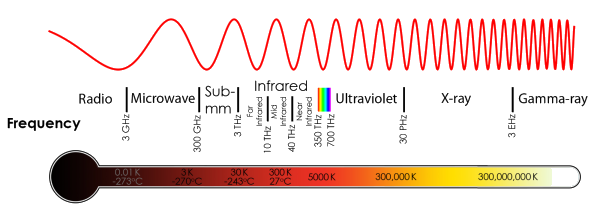
There are two types of light that our eyes cannot see: infrared and ultraviolet but just because we can not see it does not mean it is not there. We can see the effects from it and there are animals out there who are capable of seeing it. We will get to that when we discuss the eye. For now, I think I covered everything you need to know about light sources in order to understand how we see colors.
Remember:
- there are primary and secondary light sources
- there are natural and artificial light sources
- light is a wave made up of different wavelengths
- different wavelengths are different colors

So we have basically covered the hardest part. If you made it till here, it only gets easier from now on. Remeber when I said that light is actually full of different colors? We call the light coming from the Sun white light but it has all the colors of the rainbow in it. Did you ever wonder why wearing black on a sunny day gives you a different feel than wearing white? This is because of the color too. There you go, one less mystery to worry about.
When white light hits a surface of an object, some wavelengths (colors) get absorbed and some get reflected. A banana is yellow because the yellow light got reflected and a strawberry is red because the red got reflected. On this image of a leaf, you can see different colors hitting the leaf and green reflecting off of it. This is how colors work.
Wearing black clothes will get your hot because all the wavelengths get absorbed while wearing white has a different feel, colors are now all reflected.
What color an object will reflect and what absorb depends on its chemical structure. We are seeing different colors because different chemicals in objects absorb different parts of the sunlight spectrum. The mind-blowing thing to realize here is that the color is NOT something that is in the object since it has to be reflected (bounced off) from it. Colors that are in the object are those we do not see. Color that is not in the object is the color of the object. Freaky, right? A banana is not actually yellow, we see it yellow but it is everything except yellow.
Remember:
- white light hits the surface of an object with all the colors
- some colors get absorbed and some reflected
- the color that is reflected is the color we see

We are almost done, only one more thing to cover. Our eyes. Here is where some biology comes in. Scientists estimate that humans can distinguish up to 10 million colors even though we only have three different types of cones in our eyes. Imagine what some animals can see since they have more cones.
Remeber that leaf from earlier? The one where the white light hit it and the green got reflected while other colors were absorbed? That is only the half of the story. The other part is catching that light with our eyes. In order to see that green color we have to have healthy eyes, healthy brain and the light needs to hit our eyes.
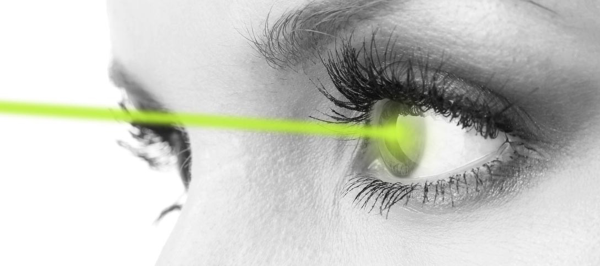
Keep in mind that this picture is exaggerated, there is no laser-like thingy coming into your eye but you get the point. The light comes from the light source, bounces off of object and lands in your eye. Eyes are not the ones which interpret that color, that job is done by our brains.
The reflected light first comes to cornea, the outermost part of the eye. From there, it is bent towards the pupil. The pupil then controls the amount of light that hits the lens and the lens focuses the light on the retina. That is a layer of nerve cells in the back of the eye that has cells that detect and respond to light; rods and cones. We have about 6 million cones and 110 million rods. Cones are the ones that contain photopigments.
Red, blue and green...
Humans have three types of photo pigments; red, green and blue. There has been some research that concluded how 12% of women have 4 types of cones and can see 100 times more colors than the rest of the people. You can check that research here. Back to seeing color... Retina transfers the energy of the light waves to nerve impulses which are transmitted through the optic nerve to the brain for interpretation as sight. Our brain then "tells" us that the leaf is green.
Since our brains are not exactly the same, we do not see colors the same. Your red is not my red and it never will be.
Remember:
- light has to fall on the eye
- the retina in the eye detects the color and sends a signal to the brain
- the brain interprets a signal and decides on the color

And there you go. This is how we see colors. I hope I made it clear enough for everyone to understand. Here is a revision to make it all nice and clear.
- Light from any source has to hit an object
- White light has many wavelengths in it.
- Some wavelengths will be absorbed and some reflected.
- Reflected light hits our eye.
- That light is detected by cones in our retina.
- The retina sends a signal to the brain
- Brain says "Weee, a yummy yellow banana!"
To get even more information on this subject, check out these resources:
How we see in color - clarkscienceHow Humans See In Color - American Academy of Ophthalmology
How Do We See Color? - Pantone
How the Visible Spectrum Paints a Picture - Kremer Eye Center
How Do We See Color? - Frontiers
Look at you all smart and understanding of how colors work. Good job! See, it wasn't that hard now, was it? You are a genius, don't ever let someone tell you different!


Image sources:
- cover image and the one with the eye and green laser are from https://pngtree.com/ and royality free
- clipart image in my titles, the image with the cande, and the electromagnetum spectrum are from Free Clip Art Libraryand is also free for use
- the lightbug is from pixabay and is under CC0 license, made by Josch13
- image of a leaf is from www.mstworkbooks
- the eye image is from www.pantone.com
- the bitmoji is well... my bitmoji. Get yours at https://www.bitmoji.com/
- cover image and the one with the eye and green laser are from https://pngtree.com/ and royality free
- clipart image in my titles, the image with the cande, and the electromagnetum spectrum are from Free Clip Art Libraryand is also free for use
- the lightbug is from pixabay and is under CC0 license, made by Josch13
- image of a leaf is from www.mstworkbooks
- the eye image is from www.pantone.com
- the bitmoji is well... my bitmoji. Get yours at https://www.bitmoji.com/
PROUD MEMBER OF:



@steemitbloggers


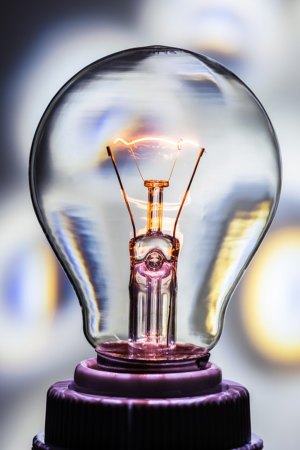

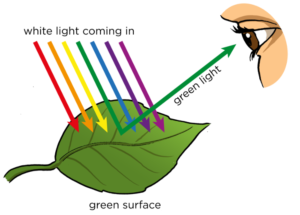

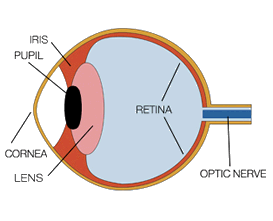

It's a very informative blog Petra.
I have been extremely poor in physics and one subject that always gives me a tough time.
You truly is genius.
Honestly I will have to read this couple of times to completely understand
I am sure you will figure it out, I believe in you 💚
Thanks!
Upvoted (by @rycharde), resteemed (by @accelerator) and has been added to the latest MAP Upvotes post.
= Quality Content Creators can request to join MAP = see the Benefits = Free Membership =
Thank you, I definitely have to check this MAP thing out 💚
Congratulations! Your post has been selected as a daily Steemit truffle! It is listed on rank 5 of all contributions awarded today. You can find the TOP DAILY TRUFFLE PICKS HERE.
I upvoted your contribution because to my mind your post is at least 24 SBD worth and should receive 151 votes. It's now up to the lovely Steemit community to make this come true.
I am
TrufflePig, an Artificial Intelligence Bot that helps minnows and content curators using Machine Learning. If you are curious how I select content, you can find an explanation here!Have a nice day and sincerely yours,

TrufflePigThank you piggy 💚💚💚
Hi @zen-art, thanks a lot for this entertaining and educational post, thoroughly enjoyable! I wrote something on how language can affect colours, have a look: Words that Change the Colours we See
What an enjoyable science article... Once an unschooler always an unschooler! You know it's a good post when you learn even more from the comments.
Keep the science coming!
I will keep it coming :)
Please Upvote➜https://steemit.com/christianity/@bible.com/verse-of-the-day-revelation-21-8-niv
The big question that remains is then, "How do you hear colors?"
It is called synesthesia and it is still puzzling scientists ;)
Synethesthesia is an intriguing subject.
See:
"6 Intriguing Types of Synesthesia: Tasting Words, Seeing Sounds, Hearing Colours And More"
https://www.spring.org.uk/2014/05/6-intriguing-types-of-synesthesia-tasting-words-seeing-sounds-hearing-colours-and-more.php
Namaste, JaiChai
Hope this gets you more Steemit love:
"(IJCH) The Human Eye and Vision - Dusting Off Old Brain Cells (or How I Still Love Teaching!) Props to @zen-art!"
https://steemit.com/science/@jaichai/ijch-the-human-eye-and-vision-dusting-off-old-brain-cells-or-how-i-still-love-teaching-props-to-zen-art
Resteemed your post.
Namaste, Jaichai
Thank you for your support honey 💚
You should start using the steemstem tag on these posts- @steemstem offers quite a bit of support for science blogging, and you meet their eligibility requirements- you'd only need to add a dedicated bibliography section.
Also, fun fact- knowing words for specific colors can actually teach you to see colors! Speakers of languages that lack specific color words have trouble seeing those colors- some specific group of African languages, for instance, have one word for the whole spectrum between orange and pink, and their speakers have trouble differentiating different shades within that range. The same phenomena has been found all over, and even holds true with the same individual before and after being taught new color words (including having them associated with a specific shade).
People have been suggesting that tag to me for a while now and I did try using it but with no effect, even got a curie award for one of my scientific posts but steemstem did not upvote the post not even with 0.001 so I gave up on them :D I do not think I am in that league yet, maybe someday.
I heard about that with words, it really is interesting. Our brains are just amazing. Thank you for your lovely comment and your support 💚
You should keep using the tag! There's no guarantee of getting an upvote, but when they do, the smallest is around 5.0 or so.